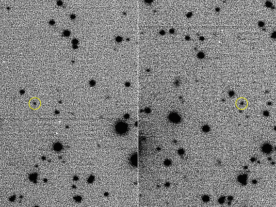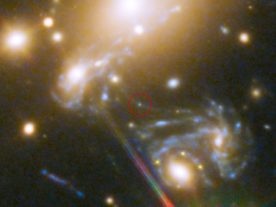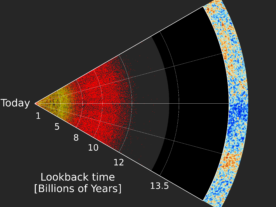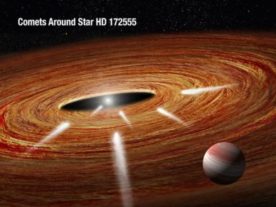
Study: Pluto Should Be a Planet!
In 2006, members of the International Astronomical Union or the IAU, an organization recognized as the authority for naming celestial bodies, voted on a set of characteristics that define what makes a planet a planet. One of those traits required a planet had to “clear” its orbit; meaning it had to provide the greatest gravitational force in […]

Asteroid May Have Immigrated From Another Solar System to Ours
An odd cigar-shaped object name Oumuamua made news late last year when it was determined to be of interstellar origin. It was touted as the solar system’s first visitor from another star system. A new study published in Monthly Notices of the Royal Astronomical Society: Letters details the discovery of what scientists are calling the […]

Discovered: Most Distant Star Seen (So Far)
The 2016 discovery of the most distant star ever seen – so far – has been outlined in a new study published in the journal Nature Astronomy. According to the study, the star, formally named 1) but nicknamed Icarus, is located about 9 billion light-years from Earth. This means light from the star started toward […]

May 2017 – Science Images

Astronomers Create Largest 3D Map of the Universe
A team of astronomers working with the Sloan Digital Sky Survey (SDSS) created the largest ever three-dimensional map of the universe. Released along with an accompanying study, the astronomers say the new map is the first to exclusively use the positions of quasars to chart the significant structures of the Universe. “Because quasars are so […]

Space Junk Jeopardizes Earth’s Space Environment
Scientists estimate that there are some 750,000 pieces of space junk circling Earth, millions more if you count fragments smaller than 1 centimeter. Think about it: Mankind has sent thousands of rockets into space since the launch of the first satellite, Sputnik 1, in 1957. While a number of space vehicles are still in active […]

Astronomers Find Newborn Stars Near Supermassive Black Hole
A star being consumed by a black hole may seem quite common. But, news of stars being formed alongside a black hole could be something to notice! But that’s just what a UK-led group of astronomers say they recently discovered. While they were studying the ongoing collision of two galaxies, known jointly as IRAS F23128-5919, […]

Ants Goof Off Too; Milky Way Steals Stars; Astronomers Spot Exocomets
Ants Balance Work and Rest to Maintain Colony Ants have a reputation of being dedicated and hardworking creatures. But did you know that like humans, ants also seek to maintain a healthy balance of work and rest? While an ant colony appears to be filled with busy workers, according to new research, there are also […]
Did our Sun Snatch Planet 9 from Another Solar System?
Is it possible that the new-found theoretical Planet 9 is actually an exoplanet, a planet from another solar system? According to astronomers at Sweden’s Lund University, it’s “highly likely” that Planet 9 was actually “snatched” from another solar system by our young sun some 4.5 billion years ago, or within 100 million years after its formation. […]
Scientists Find Traces of Early Earth in Volcanic Rock
According to most scientists, Earth was formed between 4.5 and 4.6 billion years ago after gravity forced gas and dust left over from the creation of the Sun accreted into an object called a planetesimal. Over time, the planetesimal continued to gather more and more material and eventually became a planet. Scientists say heat produced […]
